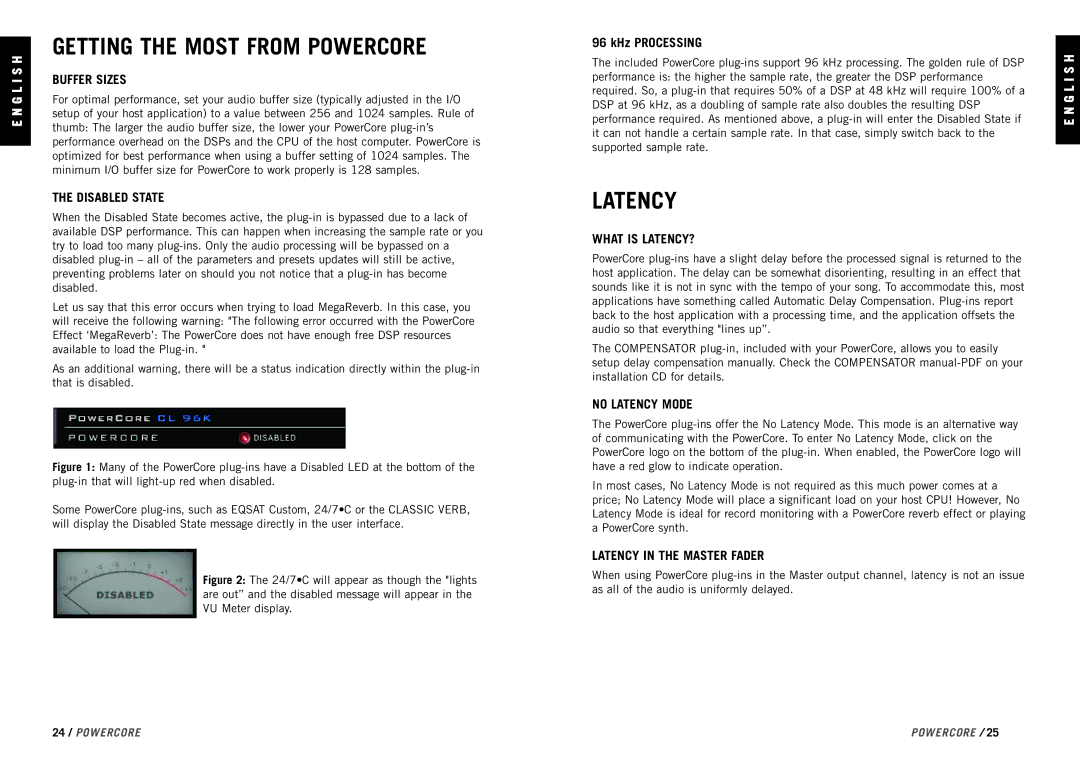
E N G L I S H
GETTING THE MOST FROM POWERCORE
BUFFER SIZES
For optimal performance, set your audio buffer size (typically adjusted in the I/O setup of your host application) to a value between 256 and 1024 samples. Rule of thumb: The larger the audio buffer size, the lower your PowerCore
THE DISABLED STATE
When the Disabled State becomes active, the
Let us say that this error occurs when trying to load MegaReverb. In this case, you will receive the following warning: "The following error occurred with the PowerCore Effect ‘MegaReverb’: The PowerCore does not have enough free DSP resources available to load the
As an additional warning, there will be a status indication directly within the
Figure 1: Many of the PowerCore plug-ins have a Disabled LED at the bottom of the plug-in that will light-up red when disabled.
Some PowerCore plug-ins, such as EQSAT Custom, 24/7•C or the CLASSIC VERB, will display the Disabled State message directly in the user interface.
Figure 2: The 24/7•C will appear as though the "lights are out” and the disabled message will appear in the VU Meter display.
96 kHz PROCESSING
The included PowerCore
LATENCY
WHAT IS LATENCY?
PowerCore
The COMPENSATOR
NO LATENCY MODE
The PowerCore
In most cases, No Latency Mode is not required as this much power comes at a price; No Latency Mode will place a significant load on your host CPU! However, No Latency Mode is ideal for record monitoring with a PowerCore reverb effect or playing a PowerCore synth.
LATENCY IN THE MASTER FADER
When using PowerCore
E N G L I S H
24 / POWERCORE | POWERCORE / 25 |
